The scenes speak for themselves.










Leica M3, 50mm Summicron Rigid, Tri-X
A Thinking Street Photography Site
The scenes speak for themselves.










Leica M3, 50mm Summicron Rigid, Tri-X
Unlike the previous post, these same scenes were all taken with my Leica M3, 50mm Summicron Rigid.

The film used is Tri-X 400.

Everything seems more, er … poetic.

Like something out of a dream.

Perhaps a post-apocalyptic scene…

That’s the bustling area near Tai Po Market MTR Station.

The trick I suppose with street photography is to find a place that is bustling and yet not too crowded so you could walk and stop comfortably without being too conspicuous.

Lots of metaphorical possibilities here.

Tree + building + bamboo scaffolding = Hong Kong!

Rectangular grids.

It’s a hot day.

A shredded plastic bag as leading line.

Yummy watermelons!

Longans!

Street exhibition.

Let the buildings speak.

Hard at work.

I managed to take all these shots before my Contax TVS II decided to call it a day. The shutters stuttered and died.
I’ve been to a few repair places and was told, well, that’s the story of vintage electronic film cameras. Sigh.
And guess what … it’s loaded with one of my few remaining rolls of the discontinued Kodak BW400CN.
Sigh.
Oh well … at least I have one more working TVS II and another TVS I…
Camera: Contax TVS II
Film: Kodak BW400CN
It’s a simple idea – one I’ve used many times.
A simple wall with interesting texture.

A window.

And equally interesting people.

The composition takes care of itself.
Thanks for reading!
Camera: Leica M6
Lens: Voigtlander 35 Nokton 1.4 SC
Film: Venus 800
Part of street photography or art-making is about finding flow.

Such that one is immersed in the activity.

Such that you could forget yourself.

And find meaning in it.

The notion of flow – many thanks to Mihaly Csikszentmihalyi.

It’s about looking, constantly looking.

Thanks for reading!
Camera: Leica M6
Lens: Voigtlander 35 Nokton 1.4 SC
Film: Venus 800
The thing with Shamshuipo is that one could walk slowly amongst pockets of crowds.

You could flow along comfortably.

Even if you stop, there’s space enough for you to do so.

So many people and things to look at.

Hope and dreams of finding a space.

The street belongs.

The street can disintegrate.

The street makes sense, if you keep looking.
Camera: Leica M6
Lens: Voigtlander 35 Nokton 1.4 SC
Film: Venus 800
When streets are busy, they look like this:

No one notices the guy with the camera:

People are too preoccupied:

Work work work.

Sell sell sell.

Buy buy buy.

Go go go.

Thanks for reading!
Camera: Contax TVS II
Film: Agfa Vista 400
Street photography is about found action.

It’s when you realize the environment is a material you could draw from.

It’s arrested action.

There’re inadvertent art displays.

Someone positioned these just so.

The goods are guiding our eyes.

The entire environment is for consumption.

Colours are for sale.

Shoes are waiting.
Thanks for reading!
Camera: Contax TVS II
Film: Agfa Vista 400
Singapore can be vertiginous at times.

You look up.

You could lose your balance.

It’s a culture on display.

A culture that wants to be legible.

It wants to be read globally.

To be taken seriously.

There’s an official stamp on everything.
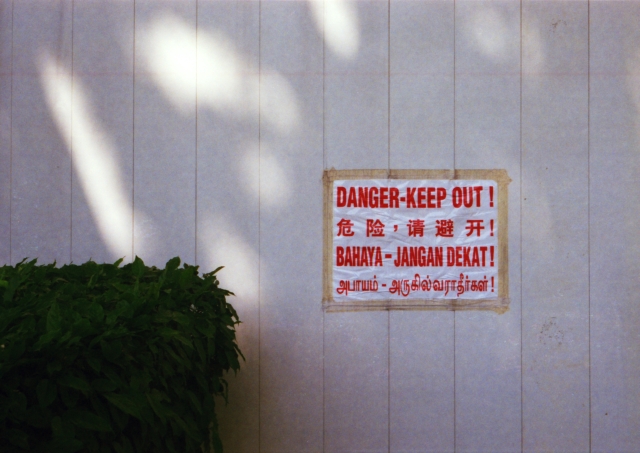
We see what we are supposed to see.
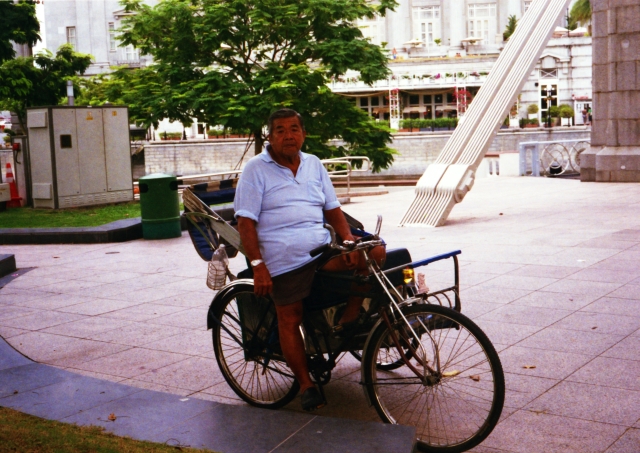
A people on display.

No one can truly be at rest.
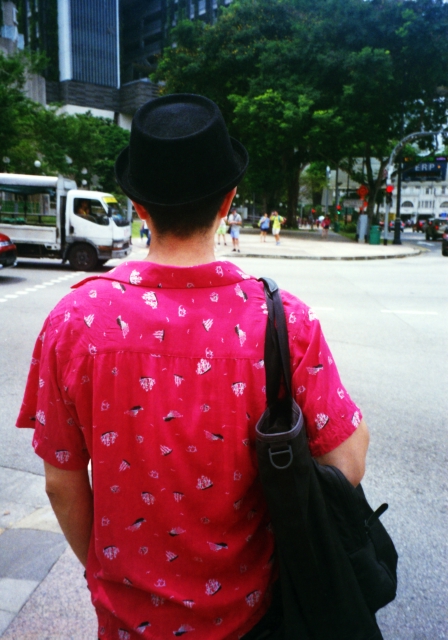
We keep on looking.
Camera: Contax TVS II
Film: Agfa Vista 400
I don’t want to over-intellectualize things, but after doing this for a few years now, I’ve come to the conclusion that for me, to take street photographs is to think on my feet.
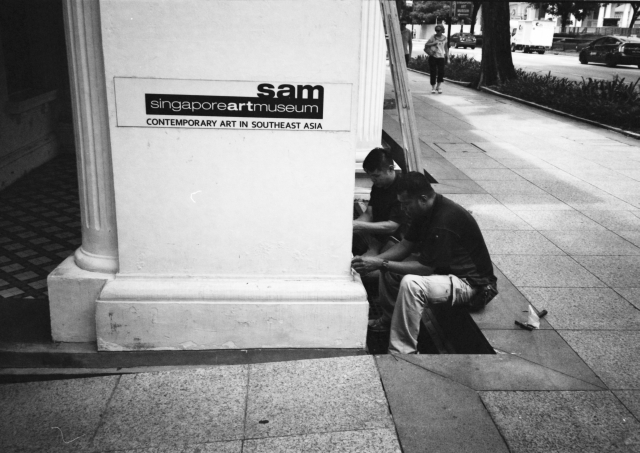
When I came upon the above scene for example, I am reminded of how much culture depends on physical toil that is too often, invisible. We marvel at the Great Wall of China, at the pyramids in Egypt, and of course, there’s an invisible history of physical toil involved.

I like the way signs are re-appropriated for other purposes. The full-size image of an air hostess welcomes you into the shop, which is closed for lunch. I make it a point to come here every time I’m in Singapore, to check out some of those NATO watch straps.
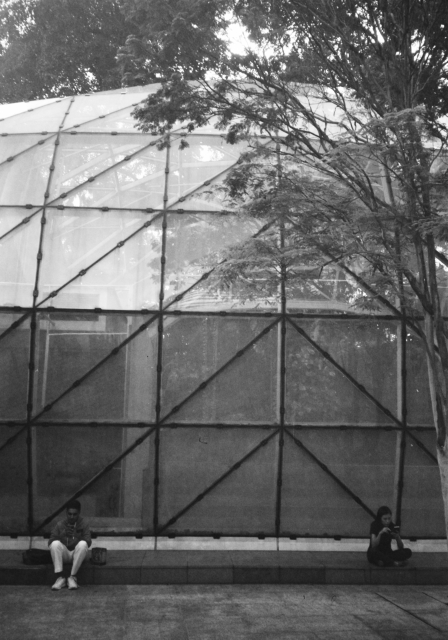
The deployment of trees is part of the city’s architecture.

The trees frame the building. Living in the city, we tend to forget that it is ultimately nature that frames human activity.

Something we do every day, waiting at a pedestrian crossing. One of those insignificant yet ubiquitous experience that characterizes urban life which we tend to forget.
Thanks for reading!
Buy my latest street photography and poetry book!
Camera: Olympus XA 3
Film: Ilford XP2